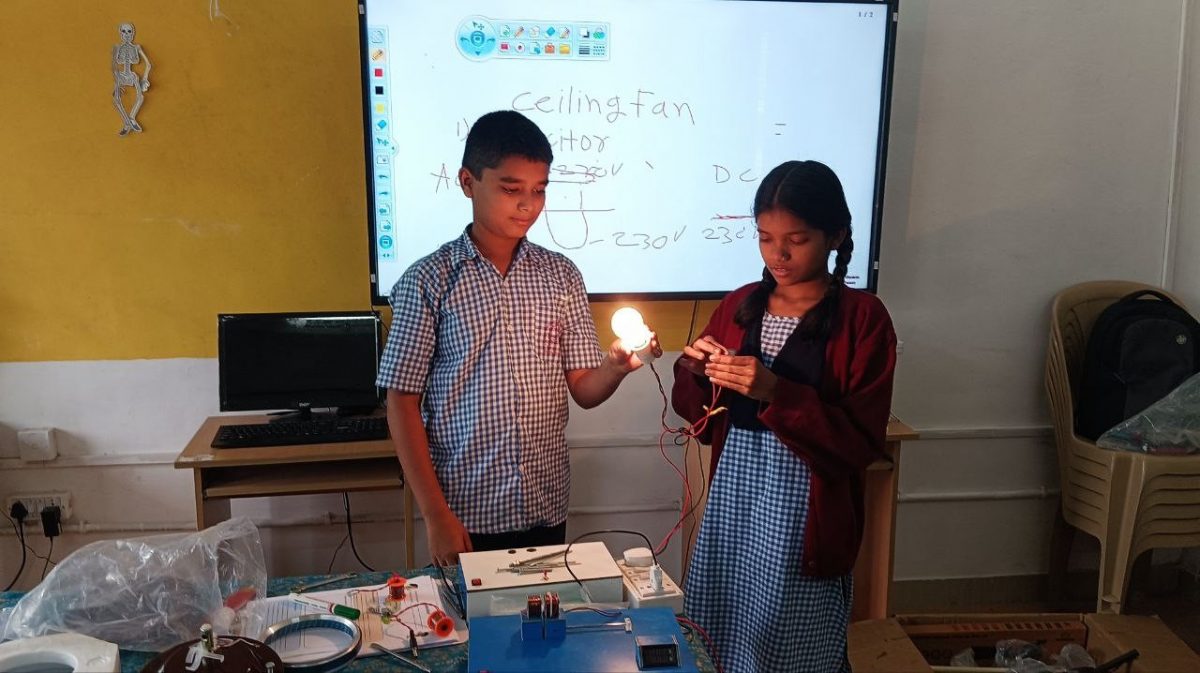STEM, an acronym for Science, Technology, Engineering, and Mathematics, represents a collective realm of knowledge that fuels innovation, drives technological advancements, and shapes the future. However, in the realm of STEM education, the presence of gender bias has been a topic of concern. The notion that STEM fields are predominantly male-dominated has long persisted, but is this perception accurate in the Indian context?
STEM education forms the bedrock of a nation’s progress. It equips individuals with the knowledge and skills necessary to tackle complex challenges and thrive in an ever-evolving world. Nevertheless, gender biases and stereotypes have historically deterred many young women from pursuing careers in STEM. These biases create barriers that hinder inclusivity and restrict the potential for diverse perspectives within these fields.
In recent years, however, there has been a growing recognition of the need for gender neutrality in STEM education. India, with its diverse population and rapidly expanding technological landscape, is actively addressing these concerns. Efforts are underway to debunk the myth that STEM fields are inherently gendered, and initiatives are being launched to foster an inclusive environment that encourages women’s participation in these disciplines.
The Indian government, educational institutions, and various non-profit organizations are working collaboratively to bridge the gender gap in STEM education. By implementing targeted programmes and policies, they aim to empower and inspire young women to explore STEM fields, providing them with the necessary resources and mentorship to thrive.
Let’s examine the current state of gender neutrality in STEM education in India, shedding light on the progress made, the challenges that persist, and the promising initiatives driving change.
Gender Gap in STEM Education: Some Facts
Gender bias in STEM fields has perpetuated a significant gender gap, limiting women’s representation and opportunities. Globally, women remain underrepresented in various STEM disciplines, affecting the overall diversity and potential of these fields.
According to a UNESCO report (2017), only around 30% of all female students choose STEM-related fields in higher education, highlighting the disparity in participation.
In the context of India, the gender gap in STEM education is similarly pronounced. The National Sample Survey Office (NSSO) data reveals that women constitute a mere 14% of the total workforce in the engineering and technology sector in India.
Moreover, the representation of women in specific branches of engineering, such as mechanical and electrical, is significantly lower compared to fields like computer science and information technology.
The gender pay gap in STEM further exacerbates the issue. A study by the World Economic Forum (2020) states that women in STEM careers earn 14% less than their male counterparts globally, indicating persistent gender-based disparities in compensation and opportunities.
In India, the gender pay gap in STEM fields remains a pressing concern, with reports from the Annual Salary Survey by the Association of Women in Science and Engineering (AWiSE) indicating a significant disparity in salaries between male and female professionals.
These statistics and data illustrate the extent of gender bias in STEM education worldwide, including India. Recognizing these disparities is crucial for addressing the systemic barriers that hinder women’s progress and opportunities in these fields. Initiatives aimed at bridging this gap, promoting gender neutrality, and ensuring equal opportunities for all are vital steps towards creating a more inclusive and diverse STEM ecosystem.
Dealing with the Gender Gap in STEM
Addressing the gender gap in STEM requires a comprehensive approach encompassing various strategies and initiatives. Efforts at different levels, including educational institutions, government policies, and societal awareness, play a pivotal role in fostering a more inclusive and equitable STEM ecosystem.
Educational Reforms and Programmes:
Implementing curriculum reforms that challenge stereotypes and biases, providing equal access to resources and opportunities, and encouraging hands-on learning experiences for all students can help dismantle gender-based barriers. Initiatives like mentorship programmes, scholarships, and STEM outreach activities targeted towards girls and underrepresented groups are essential for fostering interest and confidence in pursuing STEM careers.
Encouraging Role Models and Mentorship:
The presence of visible and relatable role models is crucial in inspiring young women to pursue STEM fields. Encouraging female representation in academia, industry, and research positions can help break the bias in STEM. Mentorship programs connecting female students with successful women in STEM can provide guidance, support, and empower them to overcome challenges and biases.
Promoting Diversity and Inclusion in Industry:
Companies and organizations in STEM fields need to prioritize diversity and inclusion initiatives. Creating inclusive work environments, addressing unconscious biases through training programmes, and implementing transparent and equitable hiring and promotion practices are crucial steps.
Raising Awareness and Challenging Stereotypes:
Media campaigns, workshops, and community engagement programmes that challenge gender stereotypes and highlight the achievements of women in STEM can reshape perceptions and inspire future generations. Collaboration among educational institutions, industry, and policymakers is essential to drive these initiatives forward.
Towards A Better Tomorrow
In order to create a gender-neutral STEM field, it is imperative to address the existing gender biases and empower women in pursuing STEM education and careers. By implementing educational reforms, promoting diversity and inclusion, and challenging stereotypes, we can foster an environment where talent and innovation thrive, irrespective of gender. Together, we can bridge the gender gap and shape a more equitable future in STEM.
Smile Foundation and STEM Education
Smile Foundation has been actively promoting STEM education through various initiatives. Smile Foundation recognizes the importance of introducing STEM learning at an early stage. By doing so, they hope to generate interest and bring children back to school. Smile Foundation has also highlighted the role of STEM learning in shaping young girls as strong leaders of tomorrow. We are setting up STEM labs in collaboration with our partners to help young girls understand their true potential.
Through these initiatives, Smile Foundation is advancing STEM learning through engaging activities, making STEM a part of childhood education, and promoting STEM education as a way to empower young girls. You too can give our young girls the sky to fly high by making a thoughtful donation here.



